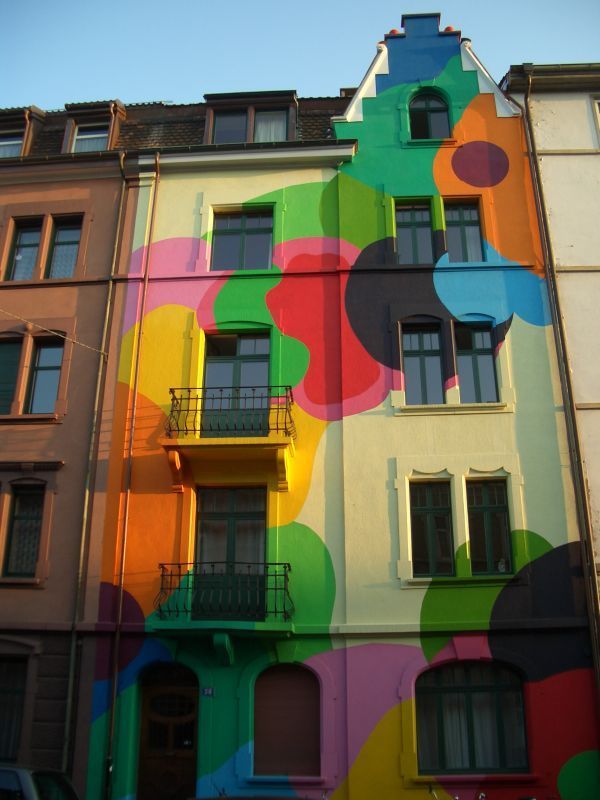#13865. Colorful Abstract Facade: When a Historical Building Becomes a Work of Art

What we see here is a vibrant example of contemporary facade art, where traditional European architecture serves as a canvas for a bold artistic statement. The historical building with its characteristic pointed roof and balconies has been transformed through a large-scale color composition consisting of geometric shapes – predominantly circles and organic spots in saturated hues.
Particularly interesting is the interaction between the colorful design and the architectural elements of the facade – window openings, balconies, and door arches. The artist hasn't simply superimposed an abstract composition onto the surface but has considered the structure of the building, allowing the color spots to flow around architectural details, creating a dynamic dialogue between historical and contemporary.
This approach to facade design is an excellent example of how one can radically change the perception of a building without altering its structural elements. This method can be adapted for private homes in a more restrained variation – for instance, by using two or three contrasting colors to highlight architectural details or creating a geometric pattern on part of the facade. It's important to remember that even when working with color, it's necessary to maintain respect for the architectural integrity of the building.